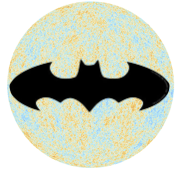BATMAN project aims at gathering theoretical and observational knowledge that can impact cosmological constraints and to provide a robust estimate of the neutrino masses.
We will provide a detailed analysis of the extra-galactic emissions in the millimetre domain. This includes the Sunyaev-Zeldovich effect by clusters of galaxies (both thermal and kinetic) as well as the background from galaxies (aka the Cosmic Infrared Background). Those are contaminants for mapping the CMB anisotropies but they also depend on the geometry and the growth of structures which are directly correlated to the neutrino density and thus the neutrino masses.
We will also study the detail of the epoch of reionization during which CMB photons are Thomson scattered producing a large scale polarised signal while reducing the amplitude of the CMB anisotropies at smallest scales, where the signal from neutrino masses impact the CMB angular power spectrum.
Finally, we will discuss neutrino constraints in the context of current tensions in the cosmological model. Namely, we will address the evolution of the constraints with respect to extended cosmological models (considering variations in the effective neutrino number Neff, the dark energy equation of state w, and the running of the scalar spectral index dn/dlnk).
While the main results of BATMAN will be a better and more rigorous constraint on the sum of the neutrino masses, the impact of this project will be distributed among several modern cosmological questions. The project will provide coherent constraints on the history of reionization both empirical and physical, to be compared and combined with these expected for instance from the JWST observations of early galaxies. BATMAN will deliver to the community new tSZ maps and profiles, as well as versatile modelling of tSZ and kSZ angular power spectra needed in any small scale CMB analysis. Furthermore the coherent and complete likelihood of CMB data (including state of the art modelling of primary and secondary anisotropies) will be used to produce forecasts for future experiments and delivered to be used in future data analyses.

